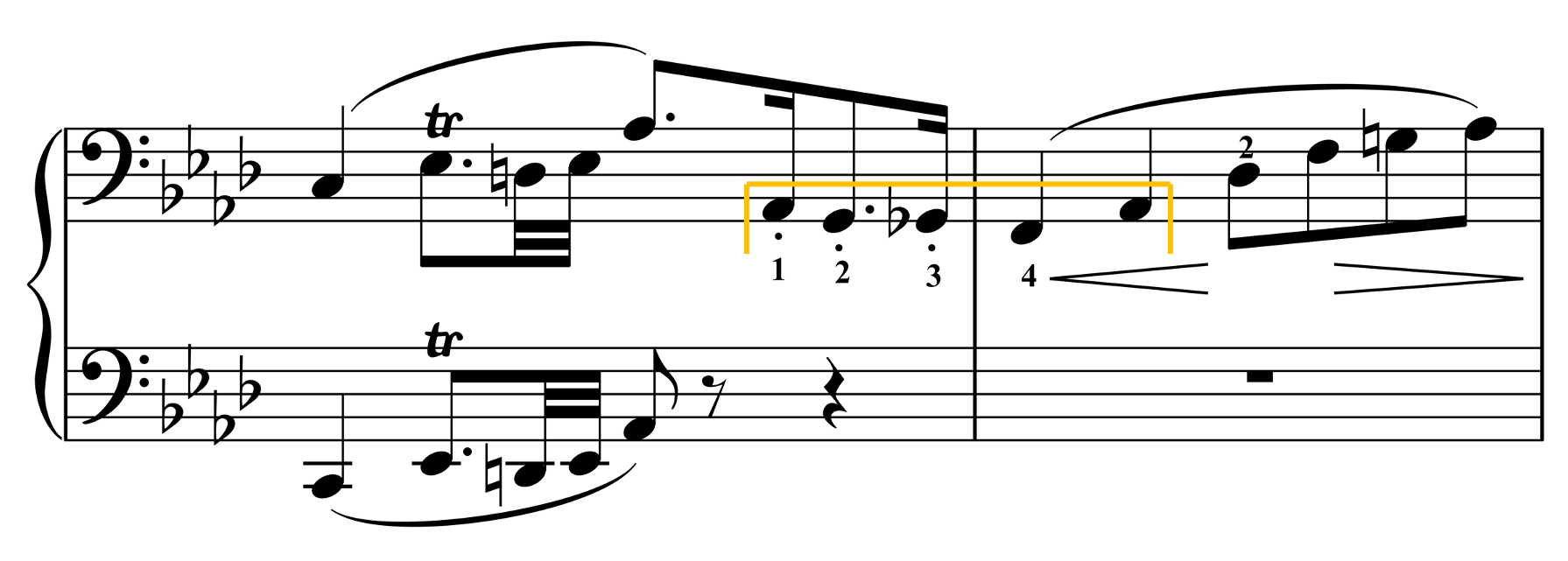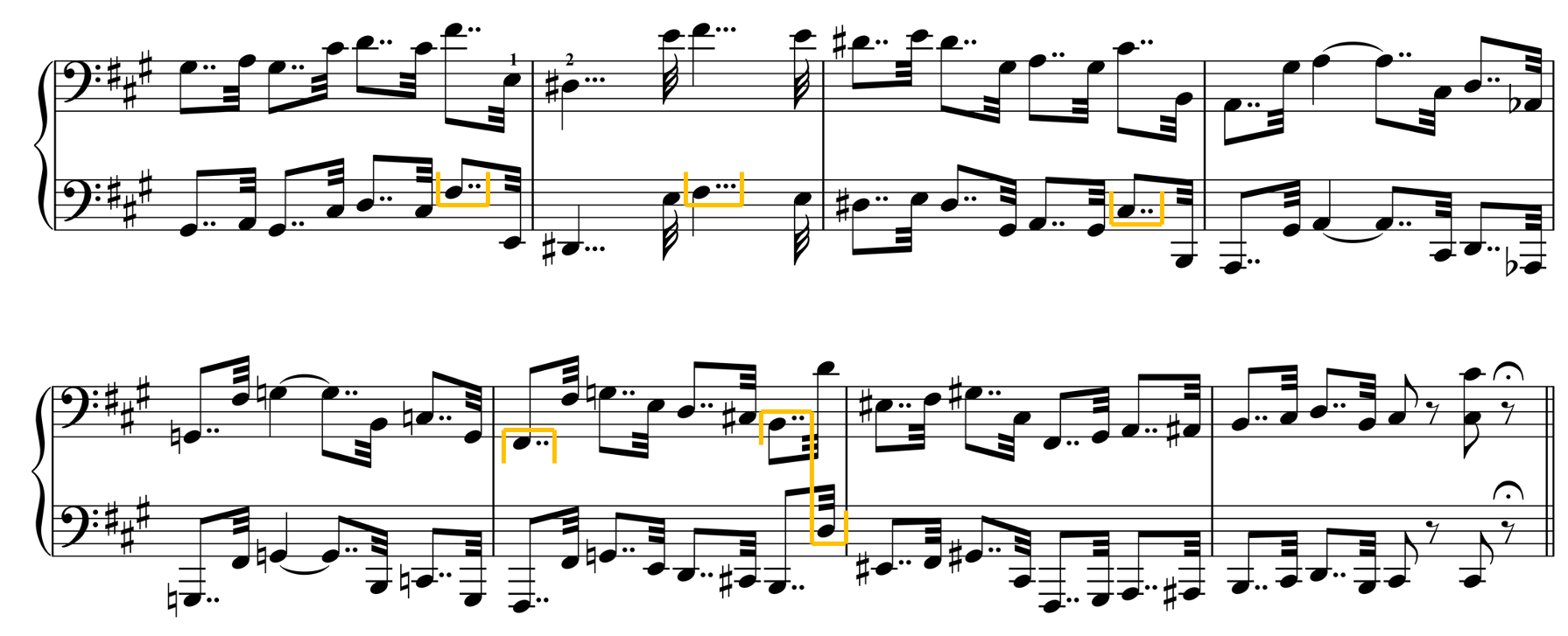“The left hand is already in this register, and using two hands avoids a position shift in the right hand.”
Submitted by Michael Clark
Published on 1/1/2020

“The left hand is already in this register, and using two hands avoids a position shift in the right hand.”
Submitted by Michael Clark
Published on 1/1/2020

“The left hand can assist in a secure ending to the trill.”
Submitted by Michael Clark
Published on 1/1/2020

“Take some of the highest and lowest notes as octaves reduces the number of position shifts.”
Submitted by Michael Clark
Published on 1/1/2020

“This fingering avoids finger crossing and uncomfortable stretches.”
Submitted by Michael Clark
Published on 1/1/2020

“I find it awkward to reach with the left-hand thumb to play the last three notes, and the right hand is already on the note.”
Submitted by Michael Clark
Published on 1/1/2020

“If the primo performer is struggling at all with this passage, it can be shared with the other player.”
Submitted by Michael Clark
Published on 1/1/2020

“Taking the low A as an octave allows the right hand to continue on stronger fingers without an awkward leap.”
Submitted by Michael Clark
Published on 1/1/2020

“I find it easier to start the left-hand octaves in m. 544 and keep them through the down beat of m. 547. Taking the Cs as octaves in mm. 549 and 552 allows the left hand move to its new position earlier.”
Submitted by Michael Clark
Published on 1/1/2020